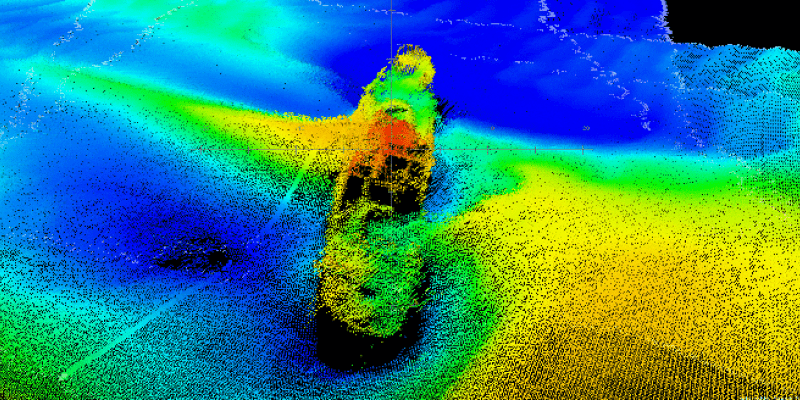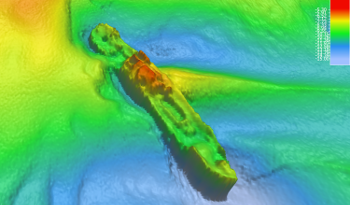
Extraordinary new images have given a clear picture of a mystery wreckage discovered in the shifting sands of the Severn Estuary.
Bristol Port’s hydrographic team were excited to capture images last month during a routine survey of the Harbour Area, using their state-of-the-art vessel Isambard Brunel. One theory was that it could be a cargo vessel called The Brunswick, which is recorded as having gone down in the same area, outside the harbour’s navigation channel and the images captured show a well preserved remains of a cargo vessel around 65m long by 9m wide with a bridge midships and a likely cargo hold on the foredeck.
Emily Hand from the Port’s expert Marine Department, said: “From research, there is a chance it may have been The Brunswick, which is the same size and transited between Liverpool and Bristol. But there is no way to know for sure as many other vessels could fit the size and shape of this wreck. We have contacted Historic England to see if we can find out more about this wreck from their records."Historic England indeed got back to the Marine Department and this week confirmed that it is very likely to be the steam ship The Brunswick. The recorded events archived at Historic Britain are fascinating and explain the story of that night. The Brunswick was a steel screw steamer built in 1898 and was a comparatively new ship of 483 net tonnage, and was one of the best equipped at the Liverpool line. The vessel has been running regularly between Liverpool and Bristol with a general cargo on board and on this particular occasion no one could imagine what would happen.
As The Brunswick departed Liverpool, the weather was fine but as they approached Black Nore Point on Christmas Eve, strong fog appeared and became very thick and dense. It was at this point that the ship ran aground on a sandback, and the steamer heeled over and began to fill with sand and water. The eight men that were on deck tried their best to cut away the lifeboat and in doing so got away just in time.
A historical report writes: "It all happened so quickly that there was no chance of doing anything for the poor fellows who were below. The ship was right on her beam ends, and you could stand upright on her side. In fact, I walked along her side to get into the little boat, and we caught bold the top end of the mainstay to hold the small boat in position to look round for those who were missing. We all had to put our heads under the mainstay to get away, and it took us all our time to get the boat clear. When the ship began to cover entirely we rowed towards Black Nora Point, and the tug then came up and towed us into Portishead."
The crew returned to the scene a few days later at low water to try and recover the bodies of the victims. They managed to recover the bodies of three men who were in their cabins, however they sadly could not get at the others, as they were in the engine room. The ever changing dynamic of the Severn Estuary has meant it was impossible to ever fully recover the vessel and it has indeed been covered by sand for the last 117 years until the Port Marine team discovered it. However a second site visit by the Port Marine team suggests its secrets will continue to be safe for some time to come as shifting sands and sediment are close to submerging and protecting it again.
- Log in to post comments

